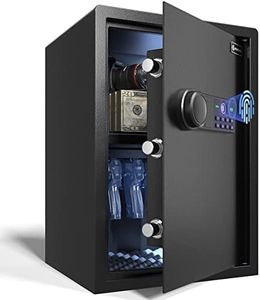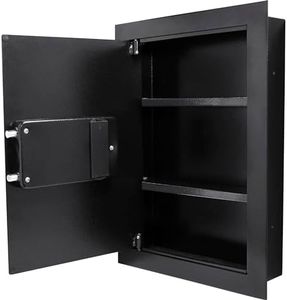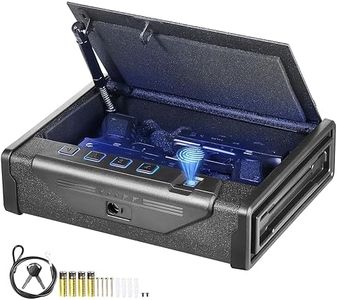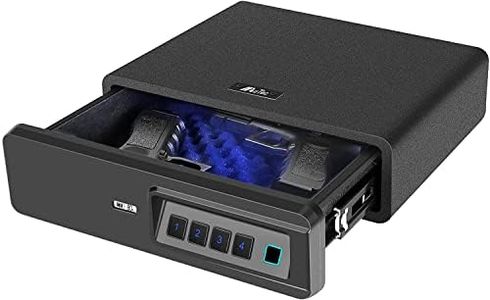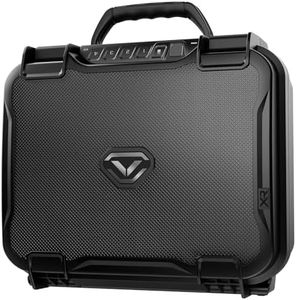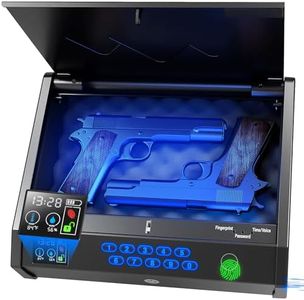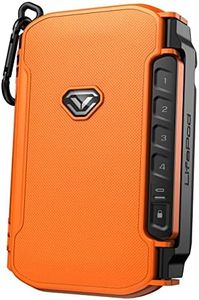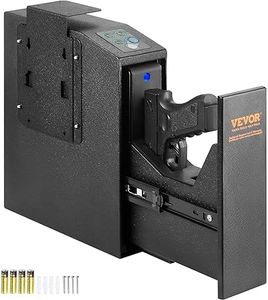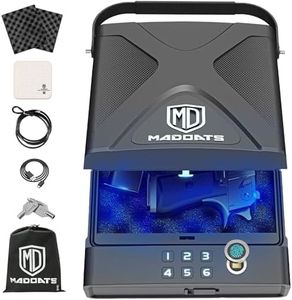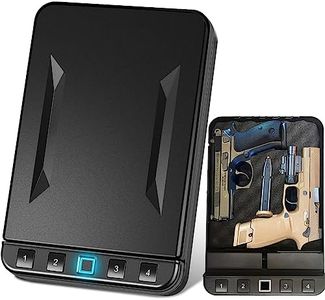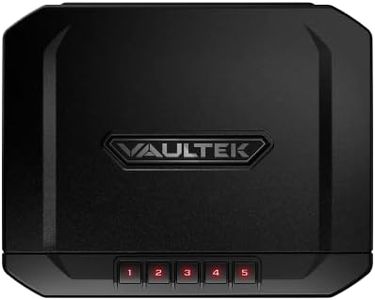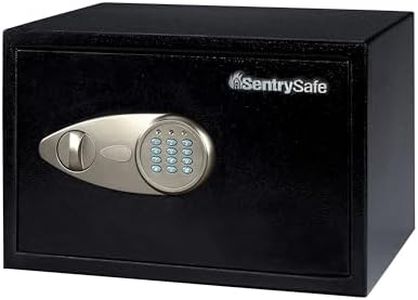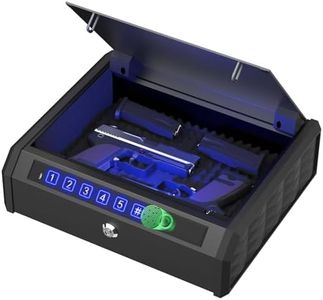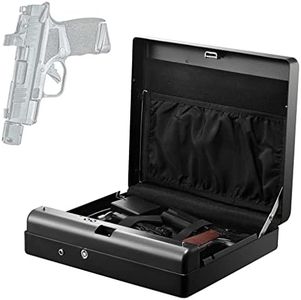We Use CookiesWe use cookies to enhance the security, performance,
functionality and for analytical and promotional activities. By continuing to browse this site you
are agreeing to our privacy policy
10 Best Pistol Safes
From leading brands and best sellers available on the web.Buying Guide for the Best Pistol Safes
Choosing a pistol safe is an important step in ensuring your firearms are stored securely, yet remain accessible when needed. The right safe will provide peace of mind by protecting against unauthorized access, theft, and in some cases, environmental threats. Understanding the key features will help you match a safe to your lifestyle and specific needs.Locking MechanismThe locking mechanism is what keeps your pistol safe secure and prevents unauthorized access. There are several types: key locks, combination dials, electronic keypads, and biometric (fingerprint) locks. Key locks are simple but require you to keep the key secure, while combination dials need you to remember a code. Electronic keypads allow quicker access but need batteries, and biometric safes offer the fastest and most convenient access but can be more expensive. Your choice should balance speed of access with security; for example, if you want rapid access in an emergency, a biometric or electronic keypad may suit you best, while a key or dial lock might be more appropriate if you value simplicity and minimal electronics.
Size and CapacityThe size and capacity of a pistol safe determine how many firearms and accessories you can store. Safes range from compact single-pistol models suitable for discreet storage in a nightstand, to larger safes that can accommodate multiple handguns and extras like magazines or important documents. If you only own one firearm or have limited space, a small safe might be enough. If you plan on expanding your collection or want to store additional valuables, a larger capacity safe would be a better fit. Think about your current needs and whether you expect them to change over time.
Construction and MaterialConstruction refers to the materials and build quality of the safe, typically made from steel of varying thickness. Thicker steel offers more security against tampering and forced entry, while thinner models may only provide against casual access. Some safes also have pry-resistant features and reinforced edges to make break-ins harder. For a higher level of security, choose a safe with robust construction and welded seams. If portability is a concern, lightweight models exist, but with a trade-off in protection. Consider what type of threats you weigh most: theft, children accessing the firearm, or just keeping it out of sight.
AccessibilityAccessibility reflects how quickly and easily you can open your safe when you need to retrieve your pistol. Safes can be designed for top-opening or front-opening, and some allow mounting in a drawer or on a wall for faster grabbing. The speed and convenience of the unlocking mechanism—such as biometric or electronic access—also play a big role in accessibility. If you require quick access for self-defense situations, look for a safe designed for single-handed, intuitive operation. For less urgent use, such as long-term storage or travel, instant access may be less critical.
Mounting OptionsMounting options refer to how and where the safe can be installed or secured. Some safes are portable and intended to be kept in drawers or suitcases, while others come with pre-drilled holes for bolting to floors, walls, or inside vehicles. A mounted safe adds security against theft by preventing the whole safe from being stolen, whereas a portable safe favors ease of movement. Your decision should be based on whether you want the flexibility to move the safe or prefer a more permanent, anchored setup for enhanced security.
Fire and Water ResistanceWhile not all pistol safes offer environmental protections, fire and water resistance may be an added benefit in some models. Fire-resistant safes can shield your firearm and valuables during a house fire up to a certain temperature and time span, while water resistance guards against damage from floods or spills. If you live in an area prone to such hazards or you plan to store important documents alongside your firearm, these features might be a valuable consideration. If your primary concern is only quick access and theft-deterrence, you may not need this level of protection.
